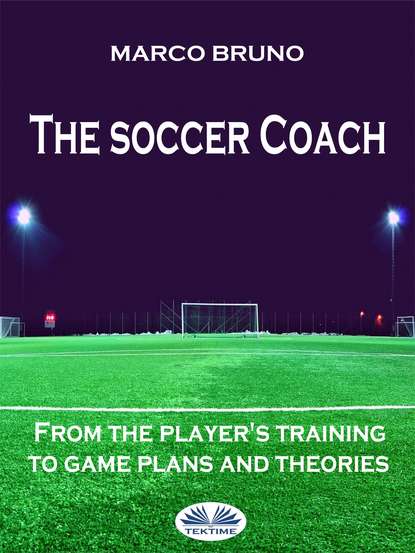По всем вопросам обращайтесь на: info@litportal.ru
(©) 2003-2024.
✖
The Soccer Coach
Настройки чтения
Размер шрифта
Высота строк
Поля
6 reduction of the pulsations at rest: this is one of the most easily controllable effects, but it is achieved only thanks to constant and prolonged training.
7 reduction of recovery time after exertion: the trained subject returns more quickly to the cardiac rhythm of rest than the sedentary subject.
8 increase in the capillaries of the heart: the heart is better sprayed and better nourished.
9 increase of the capillaries in the muscles: the opening of new channels of blood circulation is important to improve the nutrition of the muscles and to eliminate more quickly the slags produced by the muscular contraction.
10 blood rerouting: when engaged in intense physical work the blood is channeled to the muscles engaged and is subtracted from other sectors. They are mainly the intestine, the stomach, the liver and the spleen to give blood for muscle work. For this reason, those who are poorly trained, accuse pain in the right or left side.
11 facilitating the return of blood to the heart: during movement, the muscles, with their contraction, “massage” and “squeeze” the veins that, thanks to the dovetail valves, convey blood towards the heart.
EFFECTS ON DIGESTIVE FUNCTION
Physical exercise accelerates all digestion, from mechanical to chemical and secretive. Exercise strengthens and speeds up stomach and bowel movements.
EFFECTS ON THE NERVOUS SYSTEM
The Central Nervous System (CNS) consists of:
- brain;
- cerebellum (balance);
- brain stem;
- spinal cord.
The Peripheral Nervous System (PNS) consists of:
- 12 pairs of cranial nerves;
- 31 pairs of spinal nerves;
- sympathetic system (regulates heart beats, respiratory acts, blood pressure);
- parasympathetic system (regulates the digestive system and balances the reactions caused by the sympathetic system).
Movement is the most visible act produced by the nervous system: it is the motor response to nervous excitement.
In order for the movement to take place, three phases are necessary:
1) information;
2) processing;
3) knowledge.
After receiving the information (kicking the ball) an ideomotor scheme is created using the memory of similar movements already performed previously. Once the schema has been prepared, the brain produces the nerve stimuli suitable for making the right muscles contract with the right force and in the correct sequence. In the voluntary movement, especially if never done before, the times related to the three phases will be long. When the movement has already been repeated several times, it becomes automatic because the motor scheme is already known and ready; the execution of the gesture becomes faster and more precise; motion control has been automated. Therefore the motor exercise trains and educates the sensory organs, improves and sharpens the visual, auditory, tactile, proprioceptive (ability to analyze the position of our body with eyes closed) and balance.
PSYCHIC AND SOCIAL EFFECTS
Motor activity develops:
a) cognitive ability;
b) the imaginative capacity;
c) practical capacity.
The motor activity improves:
a) attention;
b) the memory.
When you are preparing to do a sports exercise, you behave like when you are preparing to understand a concept, to grasp a truth, to solve a math problem. First the data are brought into focus, that is to say, what is available and the objectives to be achieved; then the difficulties to be overcome are analyzed; then it is reflected and moves on to action; and finally, the results are checked and their accuracy checked. It is easy to understand how sport stimulates our emotional states and our passions (joy, enthusiasm, satisfaction, pride, etc.).Sports activity helps those who have problems of shyness and insecurity because they are used to courage and trust in themselves.
SOURCES FOR ENERGY PRODUCTION
Muscle fibers
It is known that the quality of the contraction of a muscle depends, essentially, on the percentage of the type of fibers that compose it. The endowment or the percentage distribution of the different muscle fibers is genetically determined
(Weineck 2001).
There are two main types of muscle fibers:
Red type I fibers, thin and slow called ST (slow twitch = slow-twitch fibers).These fibers intervene in low-intensity muscular work (high oxidative capacity, low glycolytic capacity).Their capillarization is 4.8 capillaries, on average, per fiber.
White type II fibers, clear, thick and rapid called FT (fart twitch = fast-twitch fibers).These fibers come into action in intense muscular stress and rapid force. Their capillarization is 2.9 capillaries, on average, per fiber.
There are three sub-categories of FT fibers, namely:
1 Type IIa fibers (oxidative-glycolytic capacity);
2 Type IIb fibers (high glycolytic capacity);
3 Type IIc fibers (high oxidative capacity and good glycolytic capacity, also called intermediate fibers).
According to some research, champion athletes enjoy a genetic privilege. The research has discovered a DNA gene called "alpha-actinin-3" that controls the production of actinin in muscle, a key constituent of fast-twitch fibers. The alpha-actin-3 gene exists in two main alternative forms, called “alleles”, given as a gift by each of the parents, which can be the same or different, can be presented with a double pair
of RR alleles, determine the presence of the sprint protein in the muscle;
of XX alleles, do not command the production of actinin;
of RX alleles, partial actinin production, majority of the population
Вы ознакомились с фрагментом книги.
Приобретайте полный текст книги у нашего партнера:
Приобретайте полный текст книги у нашего партнера:





